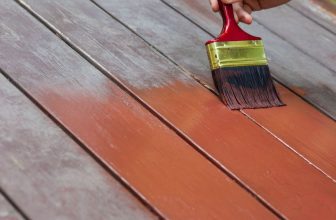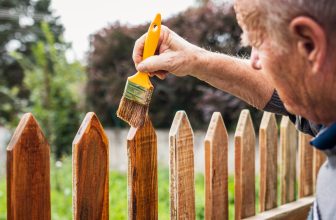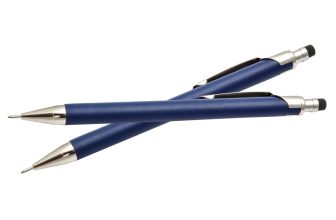Contents
A reliable wood glue is behind just about every successful woodworking project, and the right fit for your particular build will ensure your piece’s longevity and strength.
I’ve tested just about every wood glue available over the years, and I put together these reviews and a buyer’s guide to help you choose the best option for your projects.
Best Wood Glues – Top Picks
BuildEazy.com may earn a commission if you purchase a product through one of our links.
Franklin International’s Titebond products are well-known in the woodworking industry for being reliable and adaptable to various projects.
Titebond II forms a super-strong bond with all wood surfaces, whether they’re prepped or not. This makes it easy to use for just about any project, and you’ll never have to worry about your work falling apart with age.
It’s relatively thin, so it offers excellent coverage and is easy to apply and smear on your workpiece. It cleans up quickly with water to minimize sanding after it dries.
It sets in about 30 minutes, but I recommend waiting at least 24 hours before unclamping your work. This will allow for a full-strength bond.
The color is similar to a honey cream, which makes it ideal for pine, common board, and other light-colored wood. It doesn’t stain well, so be sure to clean up or sand off any excess before staining your work.
The glue doesn’t contain any harmful chemicals, so it’s safe to use in enclosed spaces. I do recommend wearing gloves to reduce mess, but it’s not required.
The formula is food-safe, so you can use this on surfaces that will come in contact with food, like cutting boards. It’s water-resistant but not waterproof, so you’ll need to make sure the bond doesn’t get submerged or wet frequently.
It comes in a large, 32-ounce bottle, and it’s very affordable. It offers excellent value for the price. The bottle has a snap-close cap that does a great job of keeping the glue inside from drying out. The tiny bit that does dry on the cap is easy to pop off.
Franklin 2303 Titebond Polyurethane Glue
This is a polyurethane glue that forms a solid bond. You can use this for gluing wood, metal, plastic, corian, ceramic, and more, so it’s more versatile than many other wood glues.
It’s easy to get a good bond even without extensive surface preparation. You need very little to make your project durable. However, it can irritate your skin and be quite messy to apply. I recommend wearing gloves and keeping some wet rags nearby to help with the clean-up process.
I suggest leaving your pieces clamped for about 45 minutes to an hour and then unclamping and letting it sit untouched for 24 hours. This will help develop the strongest bond possible.
It’s pale yellow when it goes on, and it doesn’t hold stain well. As such, I recommend doing your best to clean up the joint before the glue dries and then sanding off any excess.
The smell isn’t bad, but it contains some potentially harmful chemicals. As such, it’s best to wear a mask or use the glue in well-ventilated areas.
This glue is not food safe, so you should avoid using it on cutting boards, tabletops, or other surfaces that may contact food or beverages. However, it is waterproof and will stand up to regular exposure to moisture, so it can be suitable for some kitchen or bathroom projects where steam and water are possible.
This glue comes in 8-ounce bottles and is relatively expensive. It can dry out somewhat quickly once opened, further increasing the cost. However, you can use it to bond most surfaces. It’s not my favorite for standard wood projects, but it’s an excellent product to have around for waterproof bonds and for use with other materials.
Starbond EM-02 Super Fast Thin, Premium Instant CA Super Glue
Starbond makes a variety of fast-curing glue options for wood and other materials.
This is a cyanoacrylate (CA) glue, so it dries in under 30 seconds, reducing your working time immensely. However, it offers minimal time to correct mistakes, and it doesn’t create quite as strong of a bond as most wood glues. This is ideal for finishing work or small repairs, but I recommend a traditional wood glue for projects that need to be stable or support weight.
It’s very thin and liquidy, making it easy to apply in small areas. The bottle comes with various replacement tips that make it a breeze to adapt to your needs. It includes whip tips, a standard applicator, and a broad tip for larger jobs.
It dries clear as long as your surface is clean and you’re not using it in extreme temperatures. It can be a bit messy if you’re not careful during the application, but it’s not too difficult to keep the glue where you want it.
It’s not food safe, as it does contain some volatile organic compounds (VOCs). I recommend using this only in a well-ventilated area, and nitrile gloves will help keep it from bonding your skin.
It forms a waterproof seal, so it’s suitable for projects that you expect to be exposed to water or moisture.
It comes in a small, 2-ounce bottle, as many CA glues do. It’s significantly less expensive than most similar products, and it provides excellent value for the money. The bottle keeps the glue usable for years, as long as the storing conditions are appropriate.
Titebond Leather Glue Wood Glue
This is a leather glue that you can use for wood to wood, leather to leather, or wood to leather adhesion. It forms a very strong bond with some minimal surface preparation. The bond is flexible, so you can use it for interesting finishing effects, like surface crackling.
It’s reasonably thin, making it a breeze to apply. You can get excellent coverage without compromising the bond strength, so each bottle is bound to last for a long time.
The glue can be a bit messy, so I recommend wearing gloves. I also suggest keeping some rags and soapy water nearby for easy cleanup.
It dries in about 24 hours, and it appears more or less clear once cured. You can easily sand off any excess for a smooth finish, and it won’t stain the wood surface if you do leave a mess on your project.
It gives off some odor, but it’s not overpowering. I recommend using it in a ventilated area if you’re sensitive to smells, but it’s unlikely to bother most people.
It’s not food-safe or waterproof. As such, you should avoid using this on cutting boards, turned bowls or cups, and any other surfaces that may contact food, water, or moisture. The bond will break down over time if it’s exposed to water.
It comes in a 16-ounce bottle, and it’s relatively expensive for the amount you get. However, it has the added capability of bonding to leather, and it stays useful in the bottle for a very long time.
Gorilla Wood Glue
Gorilla is well-known across multiple industries for its powerfully-bonding glues and other adhesives.
This wood glue creates a very strong bond that is likely to stand up to some serious abuse over time. It’s suitable for pieces that will bear weight.
It’s a bit thicker than some other options, but the application is still straightforward. You can easily get this into corners and tight areas, and it’s thin enough to give you adequate coverage on your projects. The viscosity makes it easy to use on vertical surfaces.
I strongly recommend keeping a wet rag nearby to clean up any excess quickly, as it’s challenging to remove once it has cured.
It forms a good bond in about 45 minutes, but I suggest letting the joint sit untouched for at least 24 hours to allow it to cure fully.
This glue goes on white and dries clear. It does appear yellowish once stained, so make sure to sand off any excess before finishing your project.
It doesn’t contain any harmful vapors, but it isn’t food safe. As such, it’s not suitable for surfaces that may contact food or beverages.
The bond is water-resistant, so you can use this on indoor and outdoor projects without worrying about it failing.
It comes in 18 ounces bottles and is very affordable, providing great value for the money.
Elmer’s E7010 Carpenter’s Wood Glue
Elmer’s is one of the most widely recognized brands in adhesives. They produce everything from wood glue and CA glue to tape and adhesive strips.
This glue forms a good bond, but it’s not quite as strong as some other options. I personally wouldn’t use this for projects that will bear significant weight, but it’s suitable for most pieces.
It’s very straightforward to apply, and it’s thin enough to offer excellent coverage. It can seep into cracks, so it’s useful for wide gaps that you need to fill. It can be a bit messy to apply, so it’s best to keep some wet rags nearby to clean up any excess glue before it dries.
I suggest keeping your joint clamped for about an hour and then letting the glue cure for at least 24 hours. It can be a little slower to begin curing, so you’ll have plenty of time to adjust your piece before it sets.
It’s tan in color, and it dries dark yellow. It doesn’t stain well and will stand out from stained wood, so you’ll want to remove any excess before it dries and sand off any residue afterward.
This glue is non-toxic and safe to use without any protective gear. However, it’s not food-safe, so you shouldn’t use it on surfaces that will contact food or beverages.
It’s ideal for indoor use only, as it isn’t waterproof and won’t stand up to moisture well.
It comes in 4-ounce, 8-ounce, and 1-gallon containers, making it an excellent option whether you’re a casual woodworker or someone who works every day. The bottle keeps the glue usable for several years, making it an even better deal.
Professional Grade Cyanoacrylate “Super Glue” by Glue Masters
Glue Masters specializes in fast-drying adhesives, including CA glue, cements, and spray glues.
This cyanoacrylate glue forms a very strong bond nearly instantly, so you’ll spend minimal time waiting for it to cure on your project. However, the bond isn’t as strong as a traditional PVA glue, so I don’t recommend it for projects that will need to bear weight. It’s best for finishing work or minor repairs.
It’s very straightforward to apply, thanks to the included applicator tip. It’s significantly thicker than most CA glues and is closer to a paste consistency. As such, it’s an excellent option for use on vertical surfaces, but it can be challenging to get into cracks or other tight spaces.
This is a difficult glue to clean up, especially since it cures quickly. You can expect it to be fully dry in under 30 seconds, giving you very little time to adjust if you make an error. It can bond quickly to skin, so I recommend wearing nitrile gloves when using this glue.
It dries entirely clear, as long as you don’t apply it in extreme temperatures. You can leave any mistakes without them being obvious, or you could sand away any excess.
This is not food-safe, so you should avoid using it on projects that will be near food or drinks. However, it’s entirely waterproof, so you can use it for projects that will be displayed in a kitchen or bathroom, where water could be an issue. You can even apply this glue underwater, making it more versatile than many other CA glues.
It contains some VOCs, so I suggest wearing a mask while using it.
It comes in a 2-ounce bottle, and it’s relatively expensive. It dries out somewhat quickly once you open the bottle, contributing to the high cost.
J-B Weld 8251 WoodWeld Quick Setting Wood Epoxy Adhesive
J-B Weld is a trusted name in woodworking adhesives and other industries, including automotive and home repair.
This wood epoxy creates a very powerful bond that can resist up to 1,800psi. It comes in two tubes – a resin and a hardener – that make the application process more involved and sometimes a bit frustrating. It’s more challenging to clean up than most other glues if you make a mistake.
It dries in around six minutes, but you’ll need to wait for approximately three hours for the mixture to cure fully. As such, it’s faster than PVA glue but significantly slower to cure than CA glue.
This adhesive dries entirely clear and blends in well with your natural wood surface. It doesn’t stain the wood, so the excess won’t even need to be sanded after it sets.
This glue is not food-safe, so you shouldn’t use it on cutting boards, turned bowls, or other projects intended to interact with food or beverages.
The bond it forms is waterproof and will last for a long time even if exposed to moisture or liquids.
It comes in two very small 0.76-ounce tubes that you’ll need to mix together to use. The tubes last a long time if left unmixed, but they are relatively expensive for the amount you get.
FastCap 2P-10 Super Glue Adhesive
FastCap manufactures various glues, adhesives, and glue accessories for wood and other materials.
This is a two-pack of CA glue and activator that you’ll need to use together to get a good bond. It’s strong and has a 4,000psi tensile strength, but I wouldn’t recommend using this for structural pieces or those that will hold weight.
It can be a bit frustrating to apply since you need to place the liquid formula on one surface and then spray the other with the activator. However, the glue is thin enough to seep into cracks or gaps, so you can use it in tight spaces.
It’s challenging to clean up if you make a mistake, as the glue dries to the touch in about 10 seconds and cures fully in 30 seconds, giving you minimal time to make adjustments.
It dries milky white, so you’ll have to sand off any excess after you’re done.
This is not food-safe, as it contains VOCs. I strongly recommend you use this in a well-ventilated area and wear a mask when applying it. Nitrile gloves will keep it from bonding to your skin.
It’s waterproof once cured, so it’s suitable for finish work or small repairs on projects that may experience moisture or water.
It comes with a 2-ounce glue bottle and a 12-ounce spray can of applicator. It’s the most expensive glue I tested, so it can quickly put you over budget. The bottle states it has a 2-year shelf life, which I have found to be accurate.
Buyer’s Guide
Make sure you pay attention to the below factors when choosing a wood glue for your projects.
What is Wood Glue?
Wood glue is an adhesive that can bond wood surfaces to other wood surfaces. As you’ll see below, it comes in several forms, each with a different estimated tensile strength and drying time.
Types of Wood Glue
There are four primary types of wood glue, which I’ll discuss below.
Polyvinyl Acetate (PVA) Glue
PVA glue is what most woodworkers recognize as “traditional” wood glue. It forms a permanent bond that is stronger than wood itself. It’s semi-flexible, which means it can “breathe” with your wood as it swells and shrinks in response to moisture changes.
PVA glue typically dries to the touch in a few hours, but it takes around 24 hours to cure fully. They don’t take stain well once dry.
Some PVA glues are waterproof and food-safe.
Epoxy-Based Glue
Epoxy-based glue relies on the hardening and strength of epoxy to create a bond. Epoxy glues are thick, so they’re ideal for use on vertical surfaces or for filling gaps and crevices.
They’re a bit more frustrating to use, as they come in two parts that you’ll need to mix before applying.
These are the most water-resistant wood glues available, but they’re not food-safe.
Polyurethane Glue
Polyurethane glues form semi-flexible and permanent bonds, and they’re ideal for joining end-grain pieces to other end-grain pieces. The bonds are highly water-resistant, so you’ll only be able to clean up spills or mistakes with mineral spirits or solvent.
Poly glue contains VOCs, so you should always wear a mask when using them and apply them in a well-ventilated area.
They tend to take stain better than PVA glues.
Hide Glue
Hide glue is made from animal collagen, and it forms a permanent, flexible bond that can breathe with expanding and shrinking wood fibers. It takes about 24 hours to cure, and you’ll have several minutes once it’s applied to make adjustments if needed.
Hide glue usually stains better than PVA glue, but it’s not as resistant to water.
Cyanoacrylate (CA) Glue
CA glue – commonly referred to as “super glue” – is a rapidly curing adhesive that creates a sturdy bond in about 30 seconds. It gives you minimal time to make adjustments, but the bond is strong and semi-permanent. It’s not ideal for structural joints or pieces that will bear weight.
CA glue contains VOCs, so it requires a mask and ventilation during use.
Features
There are several features of a glue you might want to consider before selecting one to add to your workshop.
Viscosity
The glue’s thickness can determine where it will be useful and what kind of joints you can bond with it. A thick glue is easy to work with on vertical surfaces, but it won’t seep into cracks or gaps well and isn’t ideal for filling voids. Thin glues can quickly soak into a crevice to create a bond, but they can be a nightmare to use on vertically-oriented workpieces, as they drip readily.
Thin glue is also generally more comfortable to get out of a glue bottle, which is important when you start getting to the bottom of the container.
Waterproof
Many wood glues are water-resistant, and others are waterproof. The types of projects you intend to work on can help determine which is right for you.
For example, epoxy glues are regularly used for boat repair, and they tend to stand up best to water. Water-resistant glues shouldn’t be exposed to liquids regularly, but they can persist through spills and high moisture environments. As such, they’re ideal for projects that you place in kitchens or bathrooms, where moisture from cooking and showering is common.
Toxicity
It’s best to consider the concentration of volatile organic compounds (VOCs) in a glue before purchasing. VOCs are unsafe to inhale, so a high-VOC glue should only be used in a well-ventilated area with a mask.
You might need to consider if a glue is food-safe as well if you plan on using it for cutting boards, turned bowls or cups, or other projects that will come in contact with food or beverages.
White Glue vs. Yellow Glue
When it comes to PVA glue, there are two varieties that you’ll see most often: white and yellow. White glue is generally for indoor use only, as it isn’t water-resistant. The bond it creates isn’t strong enough for structural joints or projects that will support weight.
Yellow wood glue is referred to as “carpenter’s glue.” It’s water-resistant and waterproof in some cases, so you can use it on outdoor and indoor projects. It creates permanent, strong bonds that have a tensile strength stronger than wood.
Tips for Using Wood Glue
Most wood glue is relatively straightforward, but there are some guidelines you can follow for more comfortable use and faster cleanup.
How to Use It
If you’re using PVA or hide glue, make sure to close the bottle unless you’re applying it. PVA glue dries out when exposed to air, so the shorter periods the bottle is opened for, the longer your glue will last. Apply it to one surface, spread evenly with your finger or applicator, then clamp your pieces together and leave for about three hours. Let the bond cure for 24 hours.
CA glue has an even shorter dry time, so make sure to close the bottle immediately after use. Apply to one workpiece and quickly set the second one in place. Hold for 30 seconds with pressure to let it cure. CA glue forms the strongest bond if the wood is a bit moist before applying.
Check out this video for some tips on using CA glue on wood:
Polyurethane glue is similar to PVA glue in both the dry time and instructions for use. However, it contains VOCs, so only spread it with a nitrile glove and use it in a ventilated area with a mask on.
Epoxy glue requires a resin and a hardener, which you’ll have to mix before applying. I recommend using a small plastic cup to mix equal parts, then apply with a brush or applicator. Leave clamped for several hours according to the instructions on the bottles.
How to Clean It
PVA glue and hide glue can typically be cleaned up with a wet rag or water before it dries, and residue can be sanded away after curing. The other types will require mineral spirits or solvents before they dry and can be sanded afterward.
For more tips on cleaning up glue squeeze out, check out this video:
Safety Measures
PVA and hide glue are safe to use without protective gear, but I recommend wearing nitrile gloves to make cleanup easier. All other types should be used with a mask and adequate ventilation, as they contain potentially harmful compounds that shouldn’t be inhaled.
Frequently Asked Questions
What Is The Fastest Way To Apply Wood Glue?
To speed up the application time, you can rub wood glue directly on the joint. This will help to make a quick and secure connection that should stand the test of time.
The rubbing motion when applying the wood glue will also warm it slightly and should reduce some of the drying time.
Apply the glue directly to the joints you wish to glue using either a spatula or appliance that comes with the glue. Small spatulas can be a little fiddly to load up with glue and slow you down.
Flux brushes are another good option and will help to spread glue in more intricate areas.
If you are struggling, you can apply the glue directly to the wood by pressing the nozzle along with the wood. We recommend only doing this if you have a steady hand to avoid dripping the glue onto other parts of the wood.
Once the glue is applied and your wood secured together, you will want to hold the pieces in place.
You can do this with your hands, or place the wood in a clamp to hold them securely in place. The clamp will apply some pressure to the wood and should speed up the process.
How Long Should Wood Glue Dry Before Cutting?
Generally, wood glue should be left to dry for at least 30 minutes before you cut it.
The time it takes to dry does vary depending on the type of glue you have used, how much has been applied, and if you are applying any pressure to the glued areas or not.
You will want to consider all of these factors before cutting your wood to ensure that the glue has completely dried.
If the glue has been applied to unstressed wood, then allow between 30 minutes and 1 hour before cutting. If you have applied the glue to stressed joints, then you will need to clamp them for 24 hours before cutting.
This applies to most glue, although some brands suggest you only need to clamp the wood for 45 minutes before removing the clamps and leaving it for a further 24 hours.
Be sure to check the instructions on your glue before cutting the wood or removing any clamps that you have put in place.
The last thing you want to do is remove them too soon or cut the wood while the glue is still drying.
Doing so can risk damaging the bond between the pieces of wood and leave you needing to reglue and cure the pieces!
It’s also worth remembering that the thicker your glue is applied, the longer it will take to dry.
Instead, go in with an even layer that isn’t too thick. This should speed the drying process up and still give you a secure bond.
Does Wood Glue Work On Treated Lumber?
Yes, wood glue does work on treated lumber. You will need to be careful about the type of glue that you use, though. Opt for wood glue that is designed to work in damp conditions, like Yellow glue and Polyurethane.
There are a few types of glue out there suitable for treated lumber, and we recommend that you only use these so that the bond stays intact.
When selecting the glue for your treated lumber, consider the conditions that your lumber is in. you will need to select a glue that is suitable for these conditions.
For example, if the treated lumber is outside, then opt for a waterproof glue that can survive any wet and blustery conditions.
The glues that we have mentioned are wood glues that are suitable for treated lumber. Most wood glues will state in their product descriptions or their packaging if they are suitable for treated lumber or not.
If it does not specify, then it’s best to avoid that glue or speak to the manufacturer for more information. After all, you don’t want to use glue that isn’t going to last!
Is Liquid Nails Better Than Wood Glue?
If you are working with non-porous surfaces, then Liquid Nails would be a better option than wood glue. It is also the better option if you are using the glue in situations where you can’t clamp materials.
If you are pushed for time or gluing wood in fiddly spaces, opt for Liquid Nails. It has a far shorter drying time and will bond your pieces together quickly, without needing to be clamped.
However, if you are trying to glue two pieces of wood together, it is better to opt for wood glue. As strong as Liquid Nails is, it isn’t as strong as wood glue, so it’s better to use wood glue when gluing wood on wood.
You will also want to take care when using Liquid Nails as it can be toxic.
Be sure that you carefully follow the instructions on the label and take all the necessary safety precautions when using Liquid Nails and waiting for it to dry.
When deciding between Liquid Nails and wood glue, consider carefully the materials you are using to help you decide which is best for you. Both are fine choices providing they are used in the appropriate settings.
Conclusion
Choosing the best wood glue for your work will make the application and curing process easier for you. It will also leave you with the strongest, most durable bond possible for your particular project.
My overall favorite wood glue and top recommendation is the Franklin International 5005 Titebond II Premium Wood Glue. It creates a powerful, permanent bond, it’s easy to work with, and it’s both food-safe and water-resistant.
















